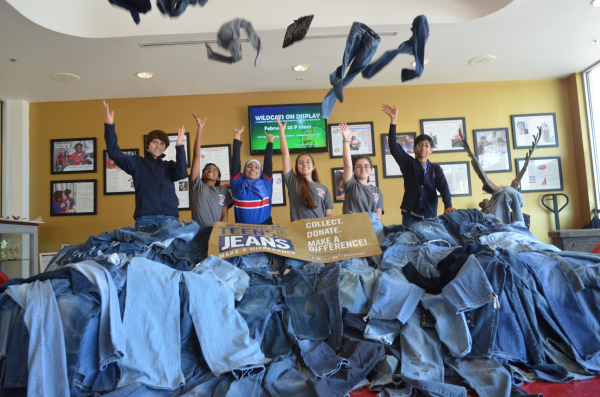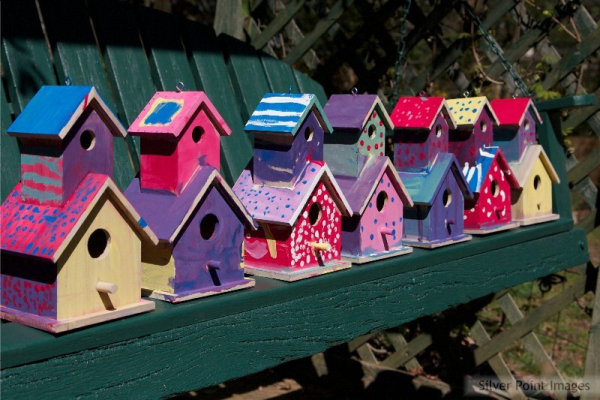This post was written by NobleHour Special Contributor Natasha Derezinski-Choo, a student at Grimsley High School in Greensboro, NC.
“Students are always asking, 'when will I ever use this,' and so service-learning, for me as an educator, has always answered that question by giving them opportunities to solve problems.”
– Brenda Elliott-Johnson, Executive Director of Student Services and Character Development for Guilford County SchoolsThe 25th annual National Service-Learning Conference will be held in Washington, D.C. this year from April 9-12. This conference invites educators and students from across the nation to attend workshops, hear keynote speakers, and engage in service. The event brings together civically engaged young people to share the impact of service-learning and volunteerism. This year the conference will focus on teaching leadership, advocating for service-learning on Capitol Hill, and service opportunities across the globe.
One of the conference presenters is Brenda Elliott-Johnson, the Executive Director of Student Services and Character Development for Guilford County Schools and 2014 recipient of the G. Bernard Gill Urban Service-Learning Award. I sat down with Elliott-Johnson to learn how a successful service-learning program is started in schools and to learn how service-learning can serve as a tool for educators.
______________________________________________________________________________
Natasha: How did you become involved in service-learning. Where did it all start?
Elliott-Johnson: I started with service-learning as a teacher, and so that would have been almost twenty years ago. I just really tried to figure out ways to take what students were learning in school to some real world examples. Students are always asking, “when will I ever use this,” and so service-learning, for me as an educator, has always answered that question by giving them opportunities to solve problems.
In Nashville I was still really involved a lot of organizations. I was a Student Council sponsor at my high school. I was involved in a program which helps young people think of ways to address bias, bigotry, and discrimination. We had a lot different ways that we were helping young people solve community problems.
I was a science teacher and we had a group of young people—I taught at a predominantly African American school—and there was a concern about the lack of African Americans going into the field of science. Our students developed a website to promote African American students into the fields of science by highlighting local people who were working in those different areas.
As a principal, I also served on a number of community boards including a Youth Holding Power project that I helped to sponsor, which was a national project that had youth leading school reform efforts, and a Youth Impact Project.
Natasha: You’ve won an award and you will be attending the National Service-Learning Conference. Can you tell me a little about that?
Elliott-Johnson: The National Youth Leadership Council holds an annual National Service-Learning Conference, which bring together students, teachers, and researchers in the field of service-learning. This is our third year, as a school district, to participate. The last three years we have been able to bring students so they can see what other students are doing around the country in the field of service-learning, as well as share our practices and learn about other opportunities for service-learning.
We are glad to be able to do that this year. It’s going to be a big deal, and one of the events includes is a visit to our elected officials – to actually go on Capitol Hill and talk about the importance of this type of learning.
Natasha: Can you tell me about the evolution of service-learning here in Guilford County?
Elliott-Johnson: Our superintendent, when he came in 2008, did listening tours around the city. What he heard over and over again was that something was missing from the education of our students. Whether he talked to parents, students, community, or teachers, they all said the same thing. They felt that it was character—that our students needed to have good character and they also needed to make a positive difference in their community, not just when they graduated. So out of that came our district’s Character Development Service-Learning Initiative, back in 2008.
Our original goal was to expand character development and service-learning district-wide. We’ve had some tremendous work happen, including in the last three years for our high school seniors to document more than 600,000 hours of service and more than 2000 of our graduates to earn service-learning recognition. We have a lot of youth that are engaged. More than 10,000 have been engaged in service-learning in communities and schools. I’m just so excited about it. We’re just beginning to measure the footprint that our youth are leaving in our community: that 600,000 hours is more than a $14 million impact. They [youth] have a lot of innovativeness that we could benefit from as a community.
To clarify, students in Guilford County School’s service-learning program can earn recognition for their service in two forms. They can earn an Exemplary Award by tracking at least 100 hours of service-learning using NobleHour, or they can earn a Service-Learning Diploma by completing at least 250 hours of service-learning.
To keep track of all the hours students complete for their service-learning recognitions, Guilford County schools turned to NobleHour to help make this process easier and more efficient. As Brenda explains, to fulfill the superintendent’s vision of service-learning “…we had to find a system that we could easily use to capture these hours. We looked at a lot of different products, and NobleHour seemed to be the one that really stood out for us and has helped us to be able to capture that data.” The impact of these hours is changing the lives of students and community members. Educators in Guilford County have started a successful service-learning program that is growing and taking learning beyond the classrooms and into the real world.

 Super Bowl XLVIII
Super Bowl XLVIII Hunger,
Hunger, Dr. Martin Luther King, Jr. said, “
Dr. Martin Luther King, Jr. said, “ Many volunteers will use MLK Day to help elementary schools. Las January, students at
Many volunteers will use MLK Day to help elementary schools. Las January, students at 


 If your student is always on the go and the thought of being home for four to five weeks will drive you both crazy, then consider a service trip to round out the winter break.
If your student is always on the go and the thought of being home for four to five weeks will drive you both crazy, then consider a service trip to round out the winter break.  The organization provides three simple meals, basic accommodations, and basic logistics to ensure a positive and productive experience. Volunteers must cover their own travel expenses and meals on days off. The organization has a strict minimum age policy and cannot accept volunteers under the age of 15 (14 in the Philippines). All 16 and 17 year olds must be accompanied with a responsible adult.
The organization provides three simple meals, basic accommodations, and basic logistics to ensure a positive and productive experience. Volunteers must cover their own travel expenses and meals on days off. The organization has a strict minimum age policy and cannot accept volunteers under the age of 15 (14 in the Philippines). All 16 and 17 year olds must be accompanied with a responsible adult.  1. Instead of Secret Santa,
1. Instead of Secret Santa, -resized-600.jpg?width=300&height=198&name=1_(15)-resized-600.jpg)


 Recycle
Recycle
 communities worldwide to reach their full potential by tackling the causes of poverty and injustice. Their
communities worldwide to reach their full potential by tackling the causes of poverty and injustice. Their  Save the Children
Save the Children While students are home for break or off for the holidays, a great community service activity is to volunteer at the food depository. School groups, service clubs, and individuals can help repack bulk food products into individual/family sizes. The food depository posts their
While students are home for break or off for the holidays, a great community service activity is to volunteer at the food depository. School groups, service clubs, and individuals can help repack bulk food products into individual/family sizes. The food depository posts their 



